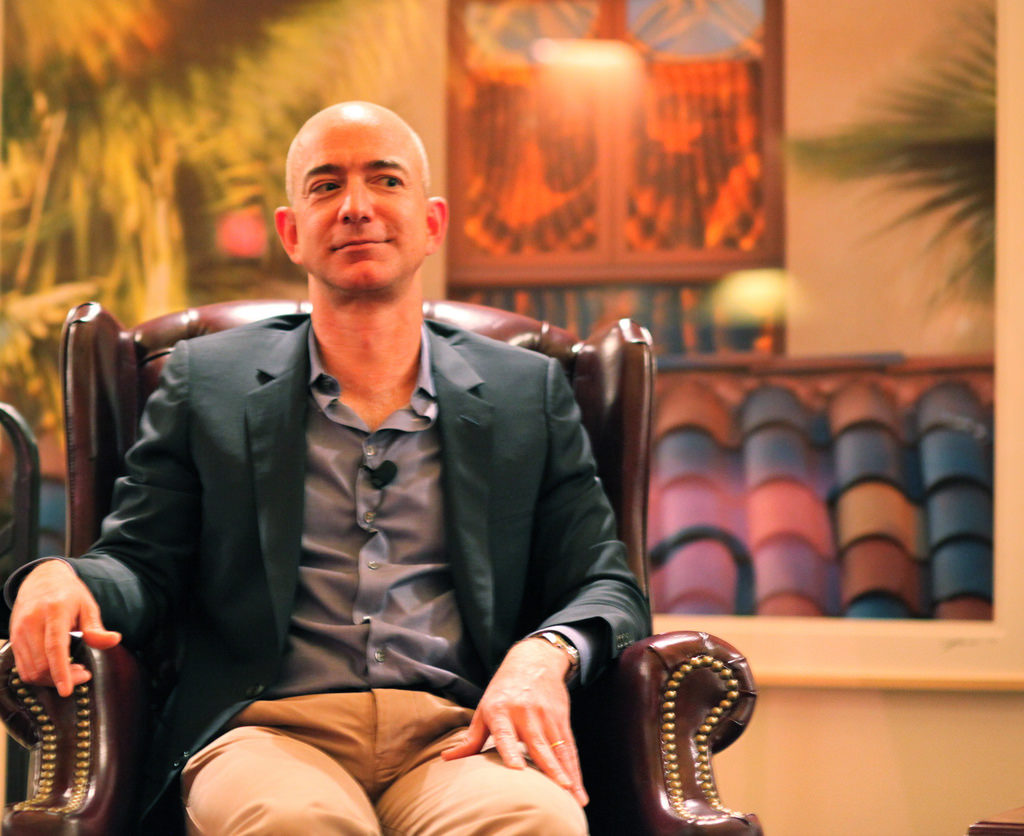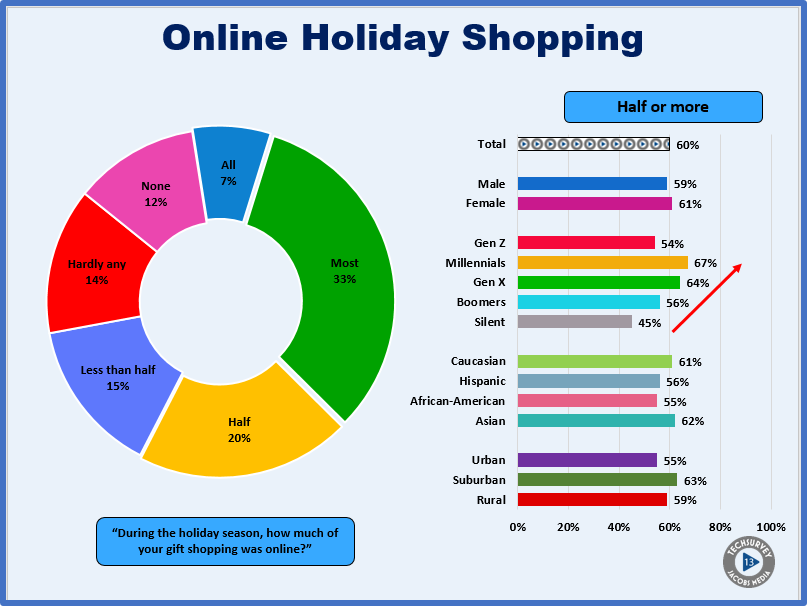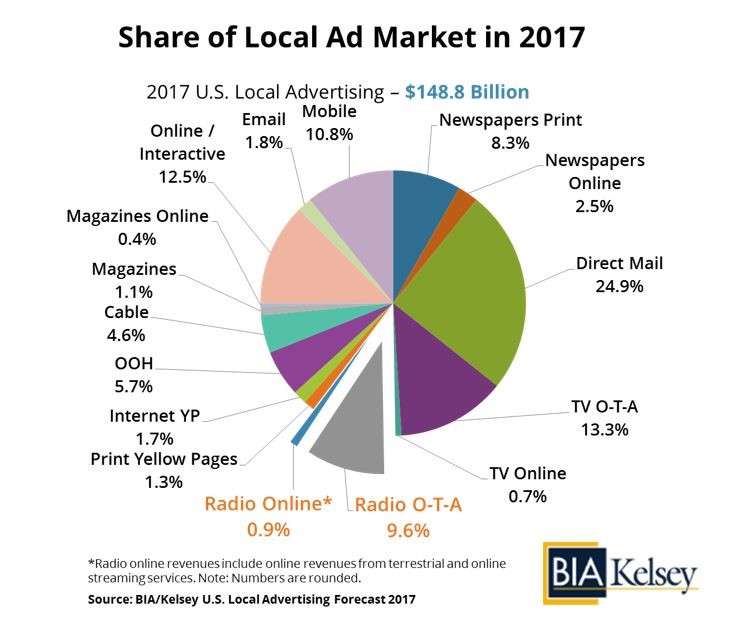Last May, Paul Jacobs could already see the writing on the wall. Our Techsurvey had just been released, and one of its big findings pointed to the exponential growth of ecommerce – a shopping shift greatly benefitting Amazon. Since Paul wrote that guest post more than six months ago, Jeff Bezos has rapidly become the richest man on the planet. And you have to believe this season’s online sales blew through last year’s records.
As we wind down the year, this is a strong think piece for anyone on the sales and revenue side of the radio industry. Actually, doesn’t that cover all of us? – FJ

Which of the following is the biggest threat to radio?
- Pandora
- SiriusXM
- Apple CarPlay
- Kmart
If you selected one of the first four options, you’d have plenty of company. For years now, radio has known about the impact of new technology and choice on radio listening. As we’ve learned, radio can monitor new media threats, program against them, sell against them, and adapt to them. They are all tangible threats to radio listening and sales efforts.
But Kmart? It’s just another troubled retail outlet, grappling with debt, store closures, and pressures from multiple sources as it struggles to stay in business. And that’s the nature of the threat to radio.
Since the 90s, when the Internet emerged as a new way for consumers to access media and preferred content, a steady stream of invaders in the form of gadgets (smartphones), distribution (connected car), content (Pandora), and listener behavior (on-demand) have emerged that get radio’s juices flowing.
And this is for good reason because gone are the days when radio dominated the audio media environment. Consumers have more choice and control than ever, and the industry needs to continually up its game in order to compete.
But iPhones, satellite radio, and even the Amazon Echo are tangible challenges that radio can see and deal with. So, while we all contemplate “the next big thing” or hot gadget, an even greater threat has been bubbling under the surface, and in the past 90 days has exploded like a volcano.
The existential threat that is right out our windshield is the shuttering of thousands of retail businesses across the country. And unlike challenges created by smartphones or Alexa, where radio can simply commission an app or the “skills,” this latest phenomenon is more complex, more daunting, and potentially more threatening.
Since the beginning of the year, major retailers have closed hundred of stores, signaling deep fissures in their business plans. The store closing count is mind-boggling, and it includes J.C. Penny (138), Kmart (108), Sears (42), Macy’s (68), MC Sports (68), Gander Mountain (32), and others – all throwing in the towel on their retail models and shutting their doors.
You can’t blame these epic fails on the economy, which continues to be robust. Consumer spending is solid, and Americans are in “buy mode.” In fact, the Consumer Confidence Index has been solid into April, reflecting a positive mood.
The problem is that behavior has been shifting away from store purchases and has moved to online commerce. This explains why Amazon’s stock is zooming. Some are predicting that it could hit $1,000/share later this year. And its CEO Jeff Bezos may be on the way to becoming the richest person in the world. You can only give so much credit to Amazon’s sale of 99¢ Kindle books.
Obviously, radio isn’t the only industry being disrupted by technology.
Those of you in commercial radio will look at this list of retailers and note that many of them haven’t spent a lot of money in radio in recent years, so what’s the problem?
Look at it another way – if these retail behemoths couldn’t fend off the Amazon onslaught, how will a small retailer on Main Street in your hometown survive? Look around your local markets and think about all the retail businesses that have closed during the past few years. Chances are, the list is stunning.
Radio’s local revenue base is being challenged, and the ripple effect impacts the entire industry.
Sensing this, we included a question in this year’s Techsurvey, which fielded back in January/February, following the holiday shopping season. After 13 years of conducting these nationwide web research studies, we are rarely surprised by the data they produce. But in this new study, we were shocked to see the seismic impact of online shopping during the past holiday gift-giving marathon.

Six in ten respondents – your listeners – told us half or more of their holiday shopping took place without them leaving the house. They sat on computers or held mobile devices to accomplish a large share of their gift selection and purchasing. And the other part of the story is that this shift affects all demographic groupings as you can see on the right side of this slide. Online shopping isn’t just a Millennial phenomenon – more than half of Baby Boomers told us the majority of their holiday purchases was of the ecommerce variety.
We see this here at Jacobs Media and jācapps. Amazon boxes show up every week, containing everything from diapers to snow shovels – items that have always been easily accessible on store shelves. But the advent of Amazon Prime makes it even easier to simply take delivery of basic household goods – as well as shoes, computers, televisions, and laundry tubs.
This behavior signals both a societal and an economic shift that is changing America. These online dollars didn’t go to retailers in your local markets who are advertising with your stations and other media outlets. They went to Amazon and the thousands of online businesses that have tapped into this cultural shopping change.
The threat to local radio is obvious. Hometown retailers are at the heart of the radio business model, and their demise signals a major problem for an industry that is already experiencing declines in national advertising dollars. The health of the local retail economy is paramount to radio’s long-term survival.
So, while financial analysts continue to forecast minimal growth for the radio industry in the years ahead, it’s time to consider a reinvention of radio’s revenue model. Local retailers can’t be stopped from closing, but the industry can shift to follow the money.
Here are some suggestions:
- Redefine the business model. A radio station’s cume is its biggest asset, so instead of selling radio ads, adapt the pitch and base it on the reality that a radio station has thousands of listeners, and they can be delivered in myriad ways – the email database, mobile, stream, podcasts, and video. Not only does this open up different revenue channels, it expands the number of clients that can be pitched. Currently, many radio stations focus on “radio” advertisers, a narrow approach that is a recipe of failure. These retail sales closures isn’t just a blip – it’s a trend. So, expand the field and create products and services that can appeal to a much broader array of businesses, whether they have funds earmarked for radio or not.
- Understand the reality of the data. Check out BIA/Kelsey’s “U.S. Local Advertising Forecast.” The radio industry has carved out a 10.5% share of local revenue. That leaves about 90% of dollars that aren’t earmarked as “radio dollars” – a lot of money to go after. And revenue resides in areas most radio stations have already invested in – online, mobile, and email marketing. They comprise over 25% of local dollars – a significantly deeper pool of bucks radio should be poised to capitalize on. Most stations already have a mobile app, a database, and a solid online presence. Now it’s time to re-craft these approaches to begin to capture where much bigger dollars reside.

- Change the scorecard. The yardstick for radio revenue is ratings, which has generated a little over 10% of local revenue. But the way in which digital platforms are measured and evaluated has nothing to do with ratings. This revenue is based on data and an ROI philosophy that goes well beyond what most radio stations talk about. So in order to tap into these dollars, radio needs to redesign its scorecard and its language. It starts with educating its sales teams on these new metrics and sales approaches. It’s a major leap, but with retailers closing and dollars shifting to these other areas, is there a choice?
- Go into the event business. Radio does a great job of sending its listeners to events owned by others where they spend a lot of money. So why shouldn’t they spend it with you? Once again, it’s redefining the business to one that’s focused on repurposing the cume and moving them to a concert, a food festival, a bridal fair, or a fireworks display where they not only spend money, but have significant sponsorship potential as well. Big companies like Townsquare and smart local operators like Ed Levine (Galaxy Communications) and Vince Benedetto (Bold Gold Media Group) have figured this out. It requires investment, time, and expertise to pull this off, but it is very doable.
- Diversify your business model. Hubbard, Entercom, Federated Media and others have launched digital agencies to not only service existing broadcast clients, but to expand their presence into non-radio categories. Leveraging their institutional knowledge of the audience, advertising, digital, positioning, and the local market counts for a lot, and has significant potential to expand the base of companies that advertise.
- Try some branded content. Another approach is to create different products via a series of podcasts. If the radio industry does one thing well, it’s creating great audio. Branded content has become a big category, and creating podcasts for a specific client or a series that spotlights local retailers is a way of leveraging what radio does best: using the existing distribution model, and expanding beyond simply selling spots.
- B2B. Historically, local radio has done an outstanding job connecting local businesses with listeners who purchase goods and services for themselves and their families. But there are huge dollars in a different category – business-to-business or B2B. Instead of visualizing the audience as individual consumers, think about them as specific groups, like business owners. There are huge dollars from the insurance industry, IT, staffing, legal and more targeting this group, and they’ve gone largely untapped by the radio business. Some stations have figured this out, creating Business Expos and other events, where they sell sponsorships and displays to companies that want to reach business owners.
At its core, radio is a simple business with clear fundamentals. It delivers audience to clients in a very efficient, effective manner. But it’s time to recognize the model is changing, driven largely by a changing consumer mindset and the online retail juggernaut.
Amazon may be redefining America’s retail business model. It’s up to radio to redefine its sales model.
We will continue to track all things digital in Techsurvey 2018, fielding next month. And one of the trackable topics is online sales this holiday season – metrics that have resonance for radio. Get more info and register for TS 18 here.
- For Radio, Will It Be Christmas In April (And Hopefully, May)? - April 21, 2025
- The Revolution Will Not Be Monetized - December 30, 2024
- What Kind Of Team Do You Want To Be? - October 4, 2024





Leave a Reply